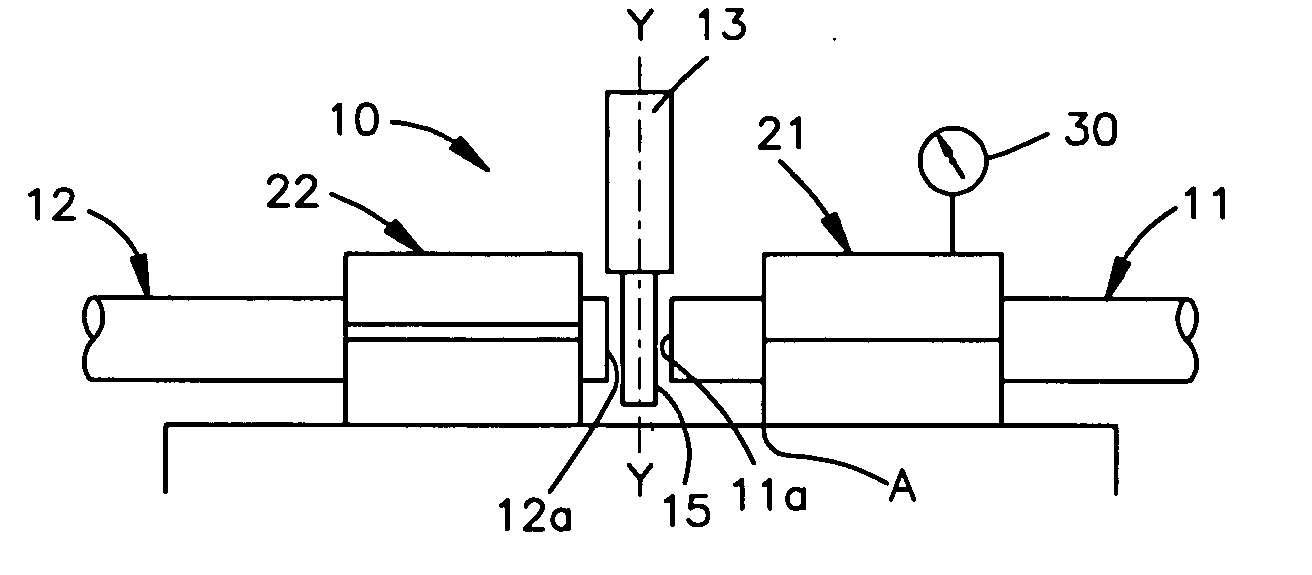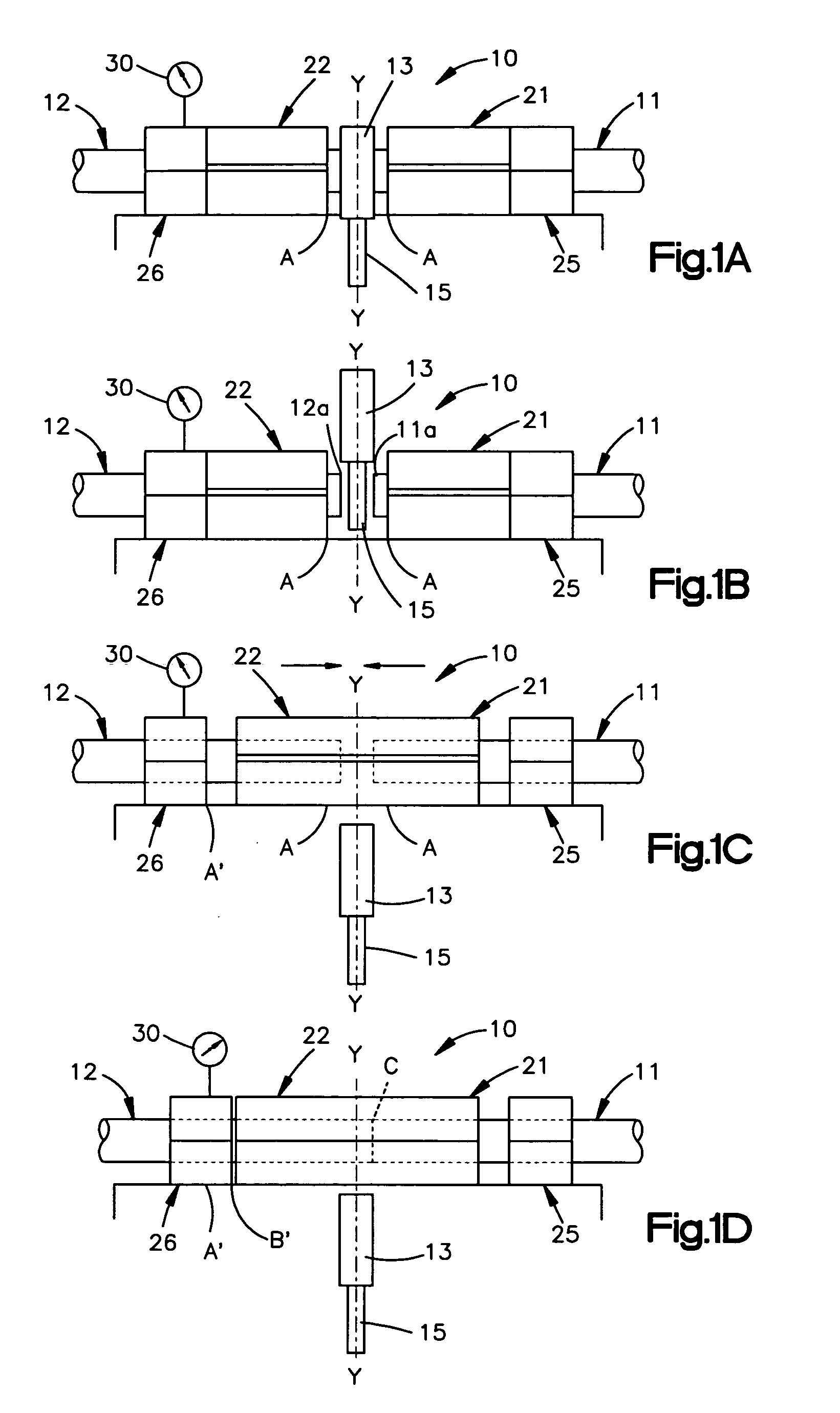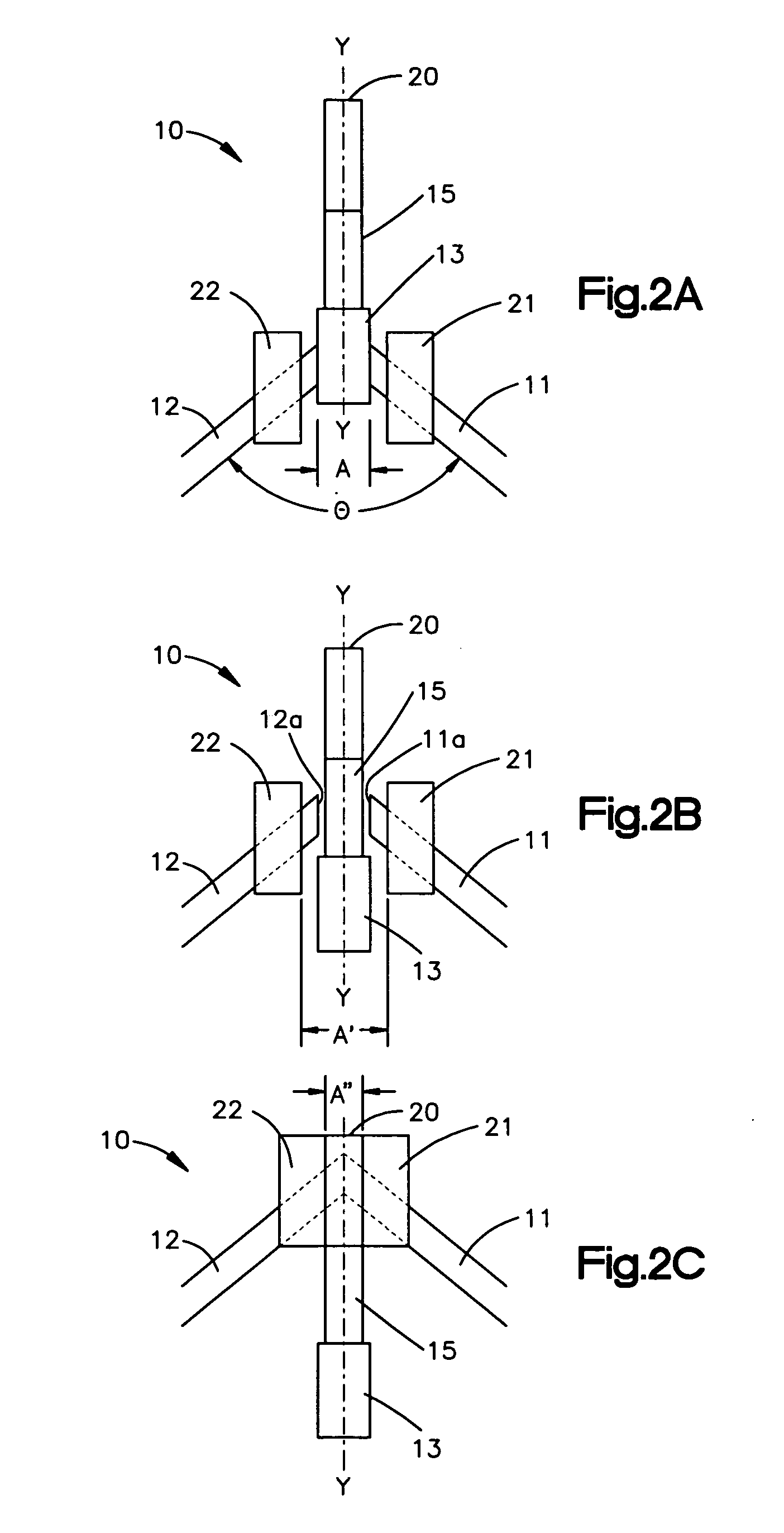Flashless welding method and apparatus
a welding method and flashless technology, applied in the field of welding, can solve the problems of splicing leaving an undesirable seam or flash, flash is particularly undesirable, and the extrusion can break, so as to improve the weld strength and appearance, eliminate flash, and eliminate the processing step and associated manufacturing costs
- Summary
- Abstract
- Description
- Claims
- Application Information
AI Technical Summary
Benefits of technology
Problems solved by technology
Method used
Image
Examples
Embodiment Construction
[0040]FIG. 1A is a schematic depiction of an extrusion welding system 10 having a first and a second extrusion end, 11 and 12, respectively placed in a loading position. The extrusions represent the ends of two articles or the opposite ends of a single article. The extrusion may include a gasket having thermal plastic properties requiring a connection to form an endless flashless product. Alternatively, the extrusions may connect two separate extrusions together to form a finished product having separate opposite ends, or include forming an extrudate that requires a connection between two separate extrusions to form a continuous roll stock.
[0041] The welding system is capable of seamlessly welding extrusion compositions typically classified as thermal plastic material, such as and including without limitation, Acrylonitrile-Butadiene-Styrene (“ABS”), Polyvinyl Chloride Plastic (“PVC”), Polystyrene, Polyolefinic materials such as polypropylene, and polyethylene, Thermoplastic Elasto...
PUM
| Property | Measurement | Unit |
|---|---|---|
| Fraction | aaaaa | aaaaa |
| Fraction | aaaaa | aaaaa |
| Angle | aaaaa | aaaaa |
Abstract
Description
Claims
Application Information
 Login to View More
Login to View More - R&D
- Intellectual Property
- Life Sciences
- Materials
- Tech Scout
- Unparalleled Data Quality
- Higher Quality Content
- 60% Fewer Hallucinations
Browse by: Latest US Patents, China's latest patents, Technical Efficacy Thesaurus, Application Domain, Technology Topic, Popular Technical Reports.
© 2025 PatSnap. All rights reserved.Legal|Privacy policy|Modern Slavery Act Transparency Statement|Sitemap|About US| Contact US: help@patsnap.com



